Urban Garden Ideas UK: Creative and Easy Solutions for Small Spaces
Urban gardening in the UK is a fantastic way to transform small spaces into vibrant, green havens. Whether you have a compact balcony, a tiny backyard, or even just a windowsill, there are many creative ideas to bring life and color to your surroundings.
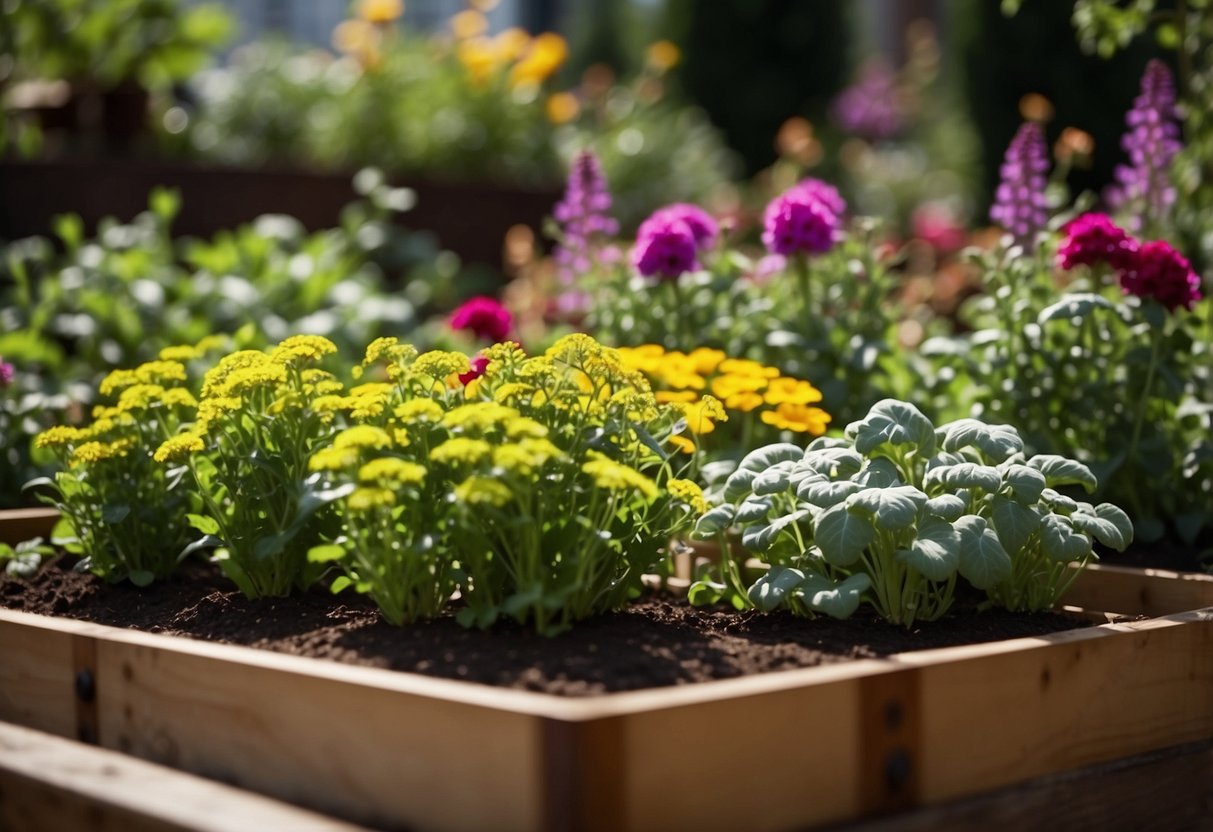
Urban gardens not only beautify your space but also contribute to a healthier and more sustainable lifestyle. Gardening in urban areas can greatly benefit your wellbeing by offering a peaceful retreat from the hustle and bustle of city life.
1) Vertical planters for balconies

Vertical planters for balconies are a fantastic way to maximize your space. You can grow a variety of plants in a small area by using wall planters, hanging baskets, or trellises. This setup not only saves space but also adds a touch of greenery to your living area.
Using vertical planters allows you to cultivate herbs, flowers, and even small vegetables. It’s perfect for urban dwellers who want to enjoy gardening without needing a large outdoor space. Plus, it can make your balcony look beautiful and inviting.
For more ideas, you can check out some creative tips on vertical balcony gardening. The possibilities are endless.
2) Portable Raised Beds

Portable raised beds are great for small spaces and urban gardens. You can move them around to catch the sun or shade as needed.
Use planters on wheels for easy movement. This allows you to adjust the garden layout anytime.
Portable raised beds are perfect for renters who might move and want to take their garden with them.
Check out some DIY mobile garden ideas for inspiration.
3) Herb Spiral Garden

A herb spiral garden is a clever way to grow a variety of herbs in a small space. You create a spiral structure that allows you to plant different herbs with varying needs.
Start by laying a drainage layer at the bottom with gravel or crushed stone. Build the spiral wall with larger stones at the base and smaller ones at the top.
Fill the spiral with soil as you build it up. Plant hardy herbs like rosemary and thyme at the top where it’s drier. Plant moisture-loving herbs like parsley and chives at the bottom.
Such a garden can maximize space and bring more variety to your urban garden.
4) ‘Alice in Wonderland’ Inspired Pathway Tiles
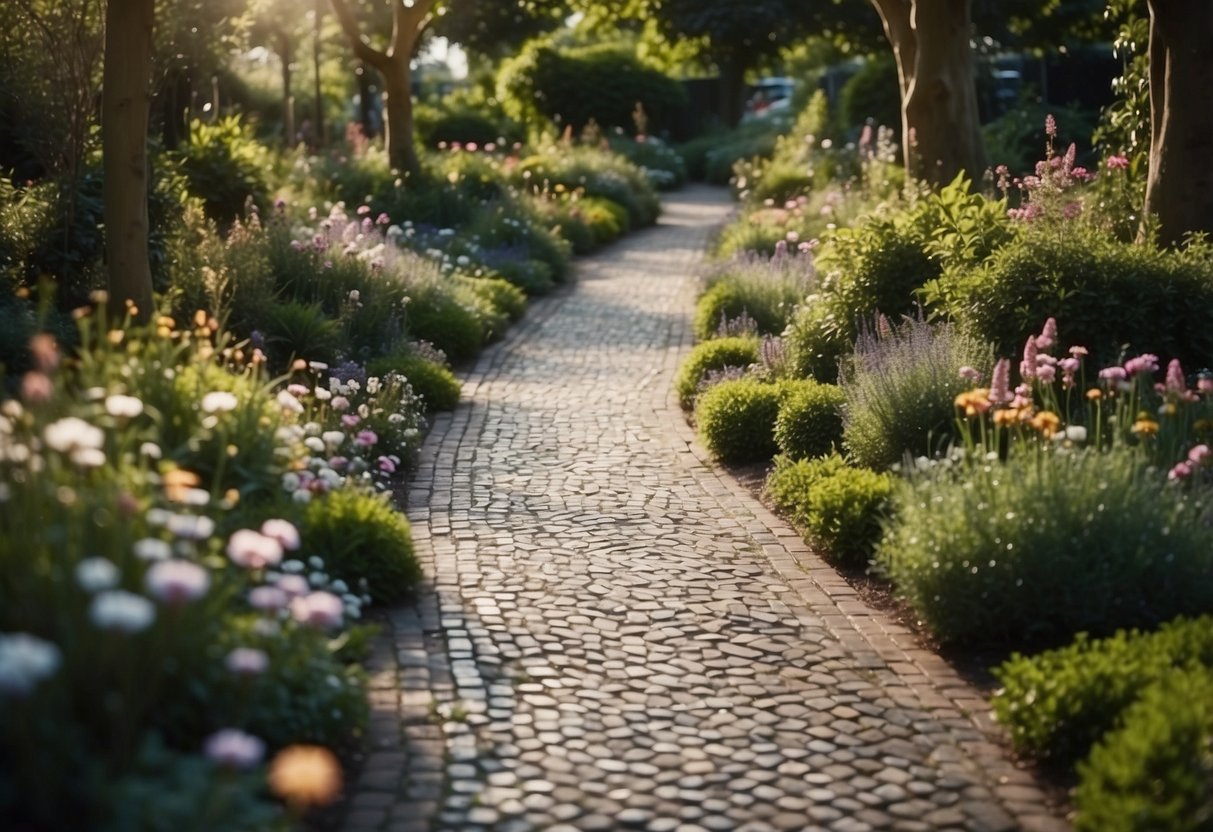
Create a magical entrance to your urban garden with ‘Alice in Wonderland’ inspired pathway tiles. Use colorful mosaics and whimsical patterns to bring the storybook charm to life.
Consider tiles with designs like playing cards, teapots, and clocks. These elements capture the fantastical essence of Wonderland.
Incorporate bright, eye-catching colors and varied shapes. This adds a playful and inviting feel to your pathway tiles, turning your garden into a whimsical escape. Find out more about colorful mosaic pathways here.
5) Rainwater Harvesting Setup
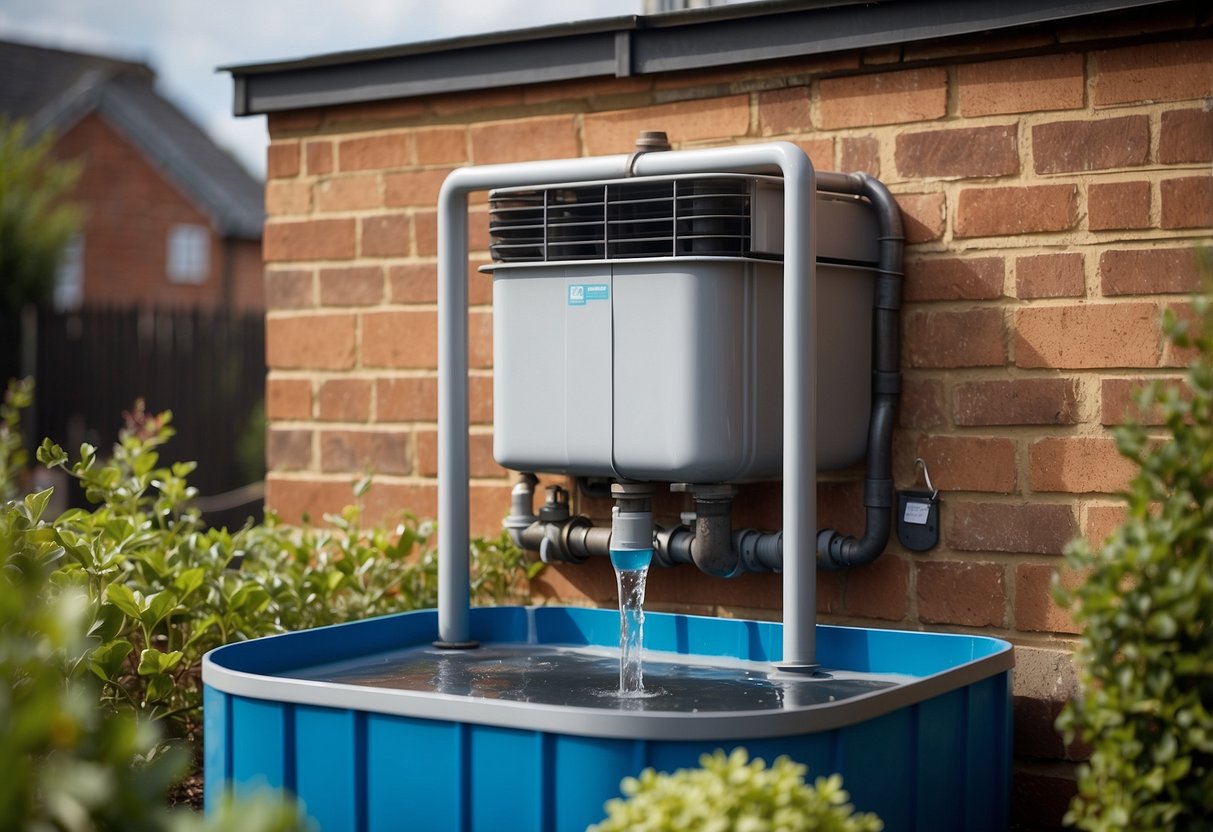
Rainwater harvesting is a great way to make your urban garden more sustainable. You can start by installing a water butt. A water butt collects rainwater from your roof. It’s simple and budget-friendly. This collected water is perfect for your plants.
For a bigger setup, you might need a more advanced system. This includes pipes and tanks. These systems can cost around £2,000 to £3,000, excluding installation.
Green roofs are also an option. They collect water and provide habitats for plants and wildlife. These roofs not only look beautiful but also help the environment. You can read more about innovative techniques for rainwater harvesting here.
6) Recycled Pallet Furniture

One great way to add charm to your urban garden is by using recycled pallet furniture. Pallets are versatile and can be transformed into many types of outdoor furniture.
You can create a simple pallet bench with just a few basic tools. This project requires two pallets for the base and one for the back.
A multi-purpose planter made from pallets not only supports your plants but can also serve as a privacy screen. Check out more ideas for pallet garden transformations here.
For beginners, making pallet furniture can be an easy introduction to DIY. You’ll need basic tools like an electric drill, wood screws, and a handsaw. You can find a beginner’s guide to pallet furniture here.
7) LED String Lights
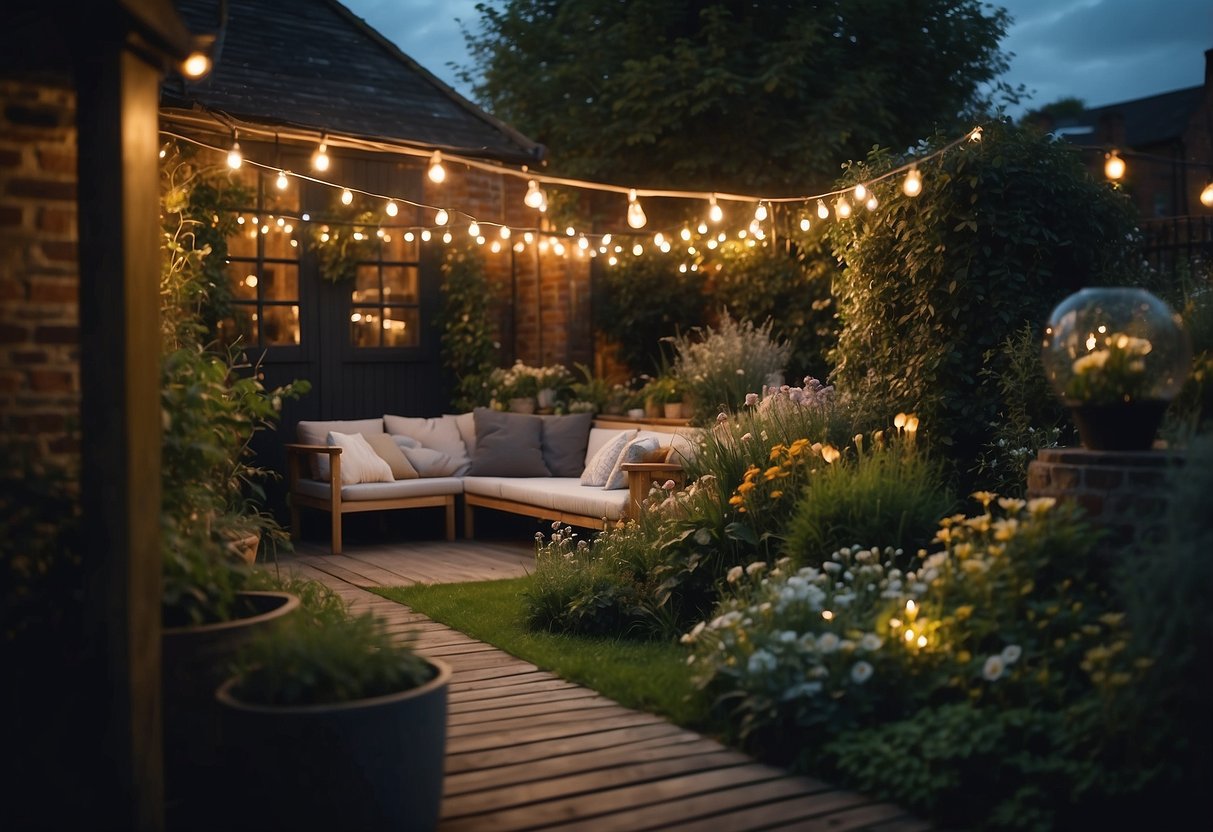
LED string lights can transform your urban garden into a cozy, magical space. They are perfect for adding warmth to your balcony or small garden. You can drape them over railings, around plant pots, or along fences.
Try solar-powered geo string lights for a boho vibe. For a festive touch, use starburst copper fairy lights. They create a dazzling effect that’s perfect for evening gatherings.
With minimal effort, you can enjoy a beautiful, well-lit garden.
8) Wildflower Seed Bombs

Wildflower seed bombs are a fun and easy way to bring colorful flowers to your garden. They are perfect for urban spaces that lack greenery. These seed bombs are made by mixing seeds with clay and compost, forming small balls.
You can scatter them in your garden or in a vacant lot. The best wildflower seed bombs contain seeds of native flowers like Birdsfoot Trefoil and Foxglove.
Making your own is simple. Just mix seeds with clay and compost, roll them into balls, and let them dry. Visit How to make a seed bomb for detailed instructions.
9) Compact compost bin

Adding a compact compost bin to your urban garden is a great way to recycle food scraps. These small bins fit into tight spaces, making them perfect for limited areas.
Many options are available, including the Blackwall Compost Converter. You can also consider the Bokashi bin, which creates compost tea, a nutrient-rich liquid for your plants.
Some bins, like the Innolites Garden Composter Bags, are flexible and easy to use. These bags are handy for batch composting and can be stored in narrow spaces.
10) Hanging Pocket Organizers

You can save space by using hanging pocket organizers for your urban garden. These organizers are perfect for growing herbs, flowers, or small vegetables.
Just hang them on a wall or fence, and you’ve got a vertical garden. Fabric or plastic organizers work well and keep your plants off the ground, protecting them from pests.
Check out some ideas for DIY vertical pocket planters. These projects are easy and budget-friendly. Plus, they add a charming touch to your garden, making it both practical and beautiful.
Benefits Of Urban Gardening

Urban gardening offers several meaningful advantages. It fosters better health and provides significant environmental benefits.
Health Benefits
Urban gardening can improve your physical and mental health. Spending time outdoors leads to more physical activity. Activities like planting, weeding, and watering burn calories and strengthen muscles.
Gardening can also reduce stress. Digging in the soil, seeing new growth, and spending time in green spaces can help lower your stress levels.
Growing your own vegetables and herbs ensures fresher, healthier food options. This can improve your diet by encouraging you to eat more fruits and vegetables. Plus, it can save you money on groceries.
Environmental Impact
Urban gardening helps the environment in several ways. It improves air quality by increasing the number of plants, which absorb carbon dioxide and release oxygen.
Gardens in urban areas can reduce the urban heat island effect. Plants and green spaces cool the air and provide shade, making cities more comfortable during hot weather.
Stormwater runoff is minimized through urban gardening. Gardens absorb rainwater, reducing the risk of flooding and decreasing the burden on city drainage systems. This also helps to mitigate water pollution.
Creating a garden in your city space supports local wildlife. Birds, bees, and other beneficial insects find habitats and food sources in urban gardens. This contributes to biodiversity and helps maintain a balanced ecosystem.
Engaging in urban gardening has significant, positive impacts on both personal health and the environment. Consider these advantages when starting your own urban garden.
Getting Started With Your Urban Garden
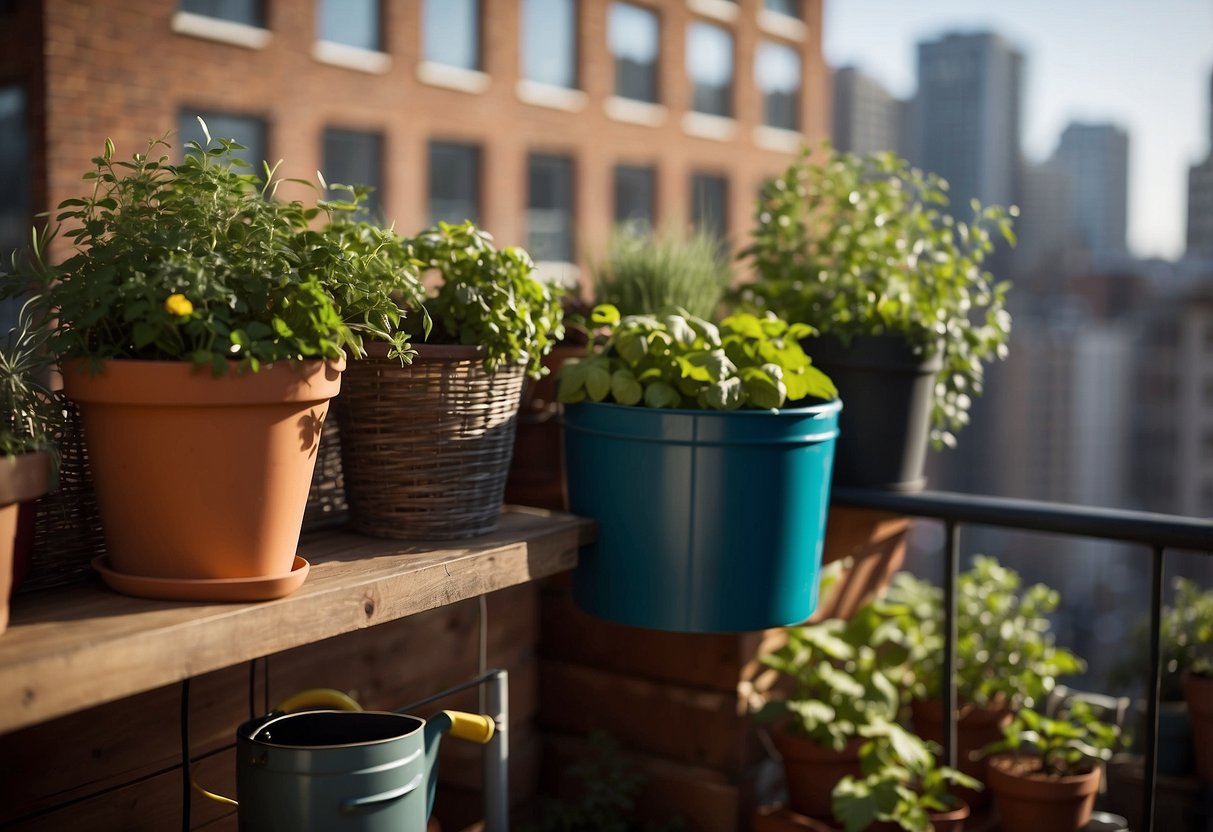
Creating an urban garden involves choosing plants suited to city environments and preparing your space for growth. This guide will help you make the right decisions and set up your garden efficiently.
Choosing The Right Plants
When selecting plants, think about your space and the conditions in urban areas. Herbs like mint, basil, and thyme are perfect for small spaces and containers. They thrive with minimal care and can be grown indoors or outdoors.
Vegetables such as tomatoes, lettuce, and peppers also do well in containers. They require sunlight, so place them on a balcony or windowsill that gets plenty of it. If space is limited, consider vertical gardening. Use trellises or stacked planters to maximize your growing area.
Flowers like marigolds and petunias add color and can grow in pots. Choose hardy varieties that can withstand urban pollution and temperature fluctuations. Don’t forget about succulents and cacti. They need little water and can survive with minimal maintenance, making them ideal for busy city life.
Preparing Your Space
To prepare your garden space, assess the light and wind conditions. If sunlight is limited, use grow lights to supplement it. Urban areas often have wind tunnels, so protect delicate plants with windbreaks such as tall planters or screens.
Use quality soil and containers with good drainage. Urban soil can be contaminated, so opt for fresh potting mix. Raised beds and containers prevent root rot and other soil-borne issues.
Consider water management. Urban gardens can dry out quickly, so install a drip irrigation system or use self-watering pots. Group plants with similar water needs to streamline your watering routine.
Lastly, make your space inviting. Add benches or colorful decorations to make it a pleasant area for relaxation and enjoyment.







